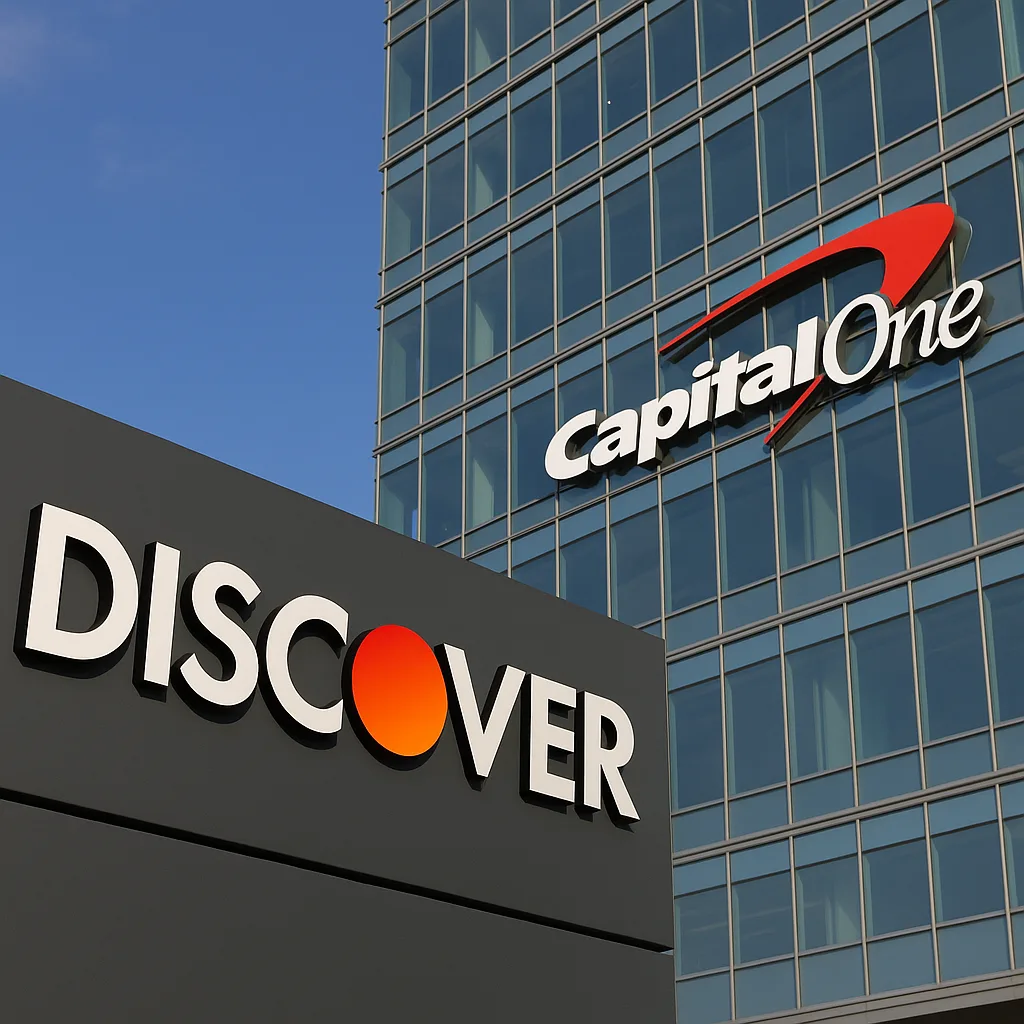Discover–Capital One Merger: A Game-Changer in the Banking Industry
In a monumental shake-up of the financial sector, Capital One’s announcement to acquire Discover Financial Services has sent ripples through Wall Street and Main Street alike. The Discover–Capital One merger marks one of the most significant consolidations in recent banking history, potentially reshaping the landscape of consumer finance, credit card competition, and digital banking.

A Strategic Power Move
Capital One, already a dominant force in the credit card space, aims to solidify its market leadership by acquiring Discover—a company that boasts over 50 million cardholders and a valuable global payment network. The merger, valued at over $35 billion, is not just a strategic expansion but a tactical move to create the largest credit card issuer in the United States by loan volume.
This all-stock transaction, pending regulatory approval, is designed to position the new entity as a financial superpower—on par with heavyweights like JPMorgan Chase and Bank of America.
Why This Merger Matters
The synergy between Capital One and Discover offers several compelling advantages:
- Payment Network Expansion: Discover owns and operates its own payment network, a rare asset in the industry. This gives Capital One direct access to infrastructure that could rival Visa and Mastercard, potentially reducing processing costs and increasing profit margins.
- Customer Base Growth: With the merger, Capital One will gain access to millions of Discover’s loyal customers, widening its reach across various credit tiers, particularly among middle-class and subprime borrowers.
- Tech Integration: Both companies have heavily invested in fintech solutions. Merging their platforms could lead to a revolutionary digital banking ecosystem, focused on user experience, AI-driven financial insights, and seamless credit management.
- Cost Synergies: The expected cost savings from overlapping operations, compliance systems, and technology could exceed billions over the next five years.
Market Reactions and Regulatory Scrutiny
Investors are cautiously optimistic. Capital One’s stock experienced a minor dip after the announcement, likely due to short-term uncertainty. Meanwhile, Discover’s stock surged, signaling strong market approval.
However, this deal isn’t a done deal just yet. Regulatory bodies are expected to scrutinize the merger intensely, especially with antitrust concerns at the forefront of U.S. financial regulation. Critics argue that further consolidation could reduce consumer choice and weaken competition in the credit card and personal loan sectors.
Senator Elizabeth Warren has already voiced concerns about the potential risks to consumers, stating that the merger “raises red flags for market competition and borrower rights.”
What It Means for Consumers
If the merger is approved, consumers could see:
- Expanded Rewards Programs: Expect improved cashback and travel perks as the new entity competes aggressively to retain and attract customers.
- More Innovative Digital Tools: With combined tech teams, users might benefit from AI-powered financial management, fraud protection, and spending insights.
- Potential Network Transition: Existing Discover users may eventually gain access to Capital One’s broader service offerings and financial products.
However, there may also be downsides, such as the risk of reduced product diversity and potentially higher interest rates if market competition diminishes.
Looking Ahead
The Discover–Capital One merger is more than a business deal—it’s a strategic realignment that could define the next decade of consumer banking. If the merger passes regulatory hurdles, we may witness the birth of a financial juggernaut with unmatched reach, agility, and innovation capacity.
For now, all eyes are on federal regulators, market analysts, and consumers alike, as the financial world watches one of the most high-stakes mergers of the decade unfold.
Stay tuned for more updates as this historic banking evolution takes shape. Whether you’re a shareholder, cardholder, or industry observer, the implications of this merger are impossible to ignore.